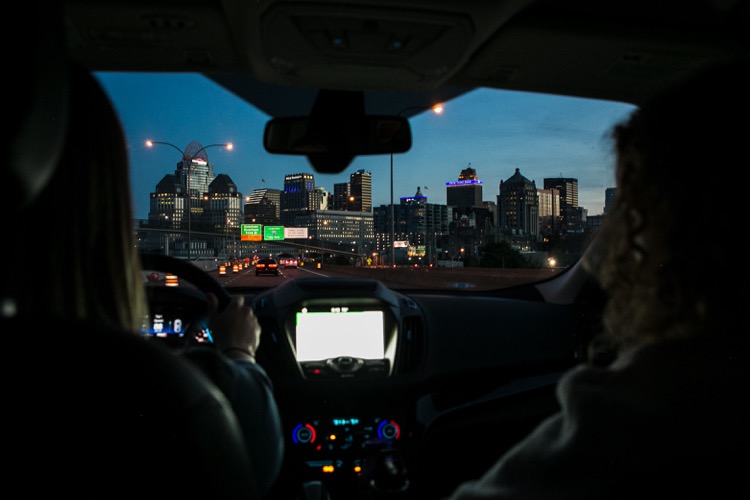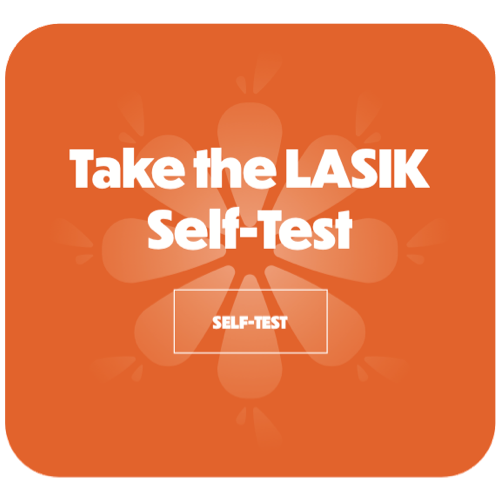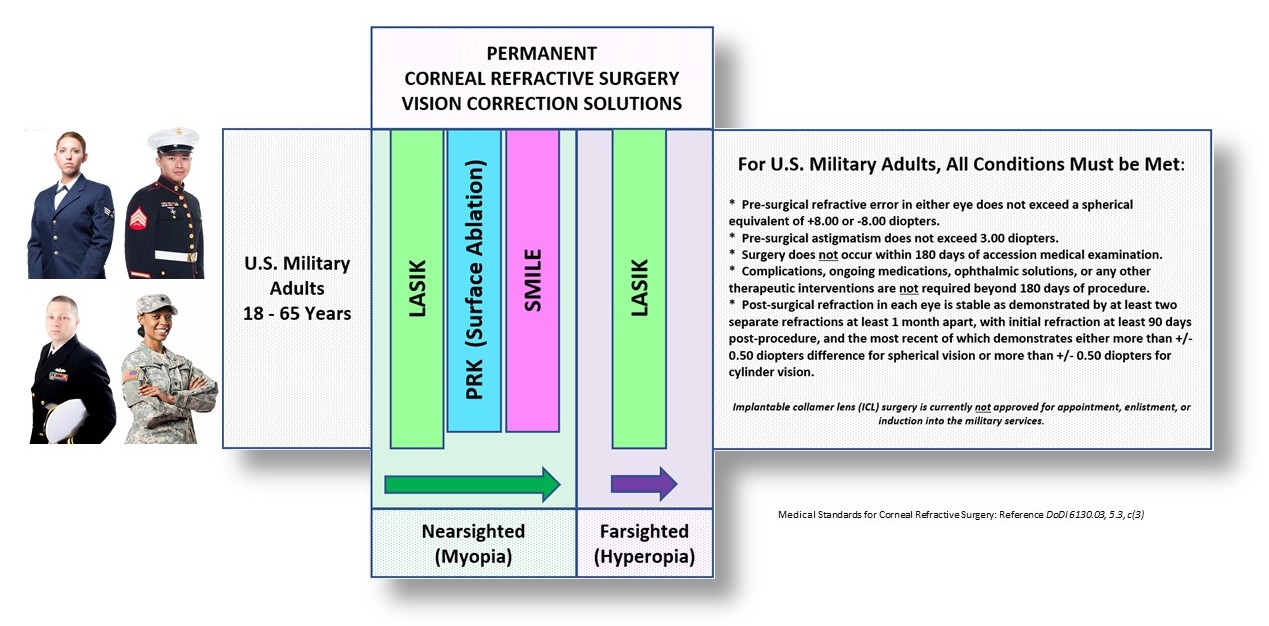Vision Correction at Carrot LASIK & Eye Center
Carrot LASIK & Eye Center is one of the few centers in the country that offers the full range of vision correction procedures, ensuring that every patient receives exactly the right procedure for them. Our surgeons are highly skilled, having performed many thousands of procedures over decades of experience.
The information below describes what we do to correct vision and how we do it. The right approach for you can only be determined with an Advanced Ocular Analysis (AOA), the most advanced examination available. Every patient who comes through our door receives an AOA—yet another distinction of Carrot LASIK & Eye Center!
See Clearly
Seeing clearly without glasses or contact lenses is a more convenient, safer and simply better way to live. To see clearly, the eye must clearly focus incoming light. Most of the focusing is done by the clear, curved front surface of the eye, the cornea, which works like any curved lens to focus incoming light. When the corneal curvature exactly matches the length of the eye, incoming light is correctly focused to create a clear image. When the corneal curvature is too “steep” or too “flat”, the image does not focus correctly on the back of the eye and vision becomes blurry.
The picture below shows how elegantly simple the eye is:
- When the corneal curvature is correct for the length of the eye, the light is focused clearly and we see well.
- When the cornea is too round the focus is too strong, the result is nearsightedness (myopia).
- When the cornea is too flat the eye is farsighted (hyperopia).
- A cornea that is oval instead of round creates two focusing points, which we call astigmatism. Astigmatism can exist alone, or with hyperopia or myopia. Astigmatism is completely correctable with modern vision correction surgery!
Surgeons and Patients
Carrot surgeons are patients too!
The US Military declared unaided vision essential and started the Warfighters Refractive Surgery Program (WRESP) in 2005. Since that time nearly 1 million sailors, soldiers, pilots and marines have undergone LASIK. Carrot surgeons Drs. Hammond and Herion trained in the military and performed many of those procedures!
Unaided vision is essential for many occupations. First-responders, athletes, people in the performing arts, drivers, pilots (with appropriate clearance) and any job that requires quality, unaided vision benefit from LASIK.
Glasses and contacts can hold you back and LASIK makes you more competitive. Get LASIK, do more!
Refractive Surgery
The focus of the eye is technically referred to as the refraction and any problems with the refraction are called “refractive errors.” Refractive surgery refers to the procedures used to correct refractive errors. There are several refractive surgery procedures available, all of which have been validated and approved by the FDA and extensive studies. They fall into two general categories – those that modify the corneal shape using lasers, and those that put lenses inside the eye, most commonly done when performing cataract surgery.
Laser Refractive Surgery
Modern corneal shaping procedures are performed using lasers. Three procedures are used and it is important to match the right procedure to each eye. Very few centers offer all three procedures, and Carrot LASIK & Eye Center is one of them.
The most familiar of the three procedures is LASIK, which stands for Laser Assisted Keratomileusis In-Situ. This name describes the process – LASIK uses a laser to reshape (mileuse) the cornea (kerato) in place (in situ). LASIK has been around for decades and is the most studied and commonly performed procedure in the world. LASIK is performed beneath a thin flap of tissue that is lifted using a laser. When the flap is replaced, the eye heals quickly with minimal if any discomfort.
LASIK
LASIK is used to correct most refractive errors
LASIK is used to correct most refractive errors – nearsightedness, farsightedness and astigmatism. It can be performed in most people 18 years of age and older.
PRK
PRK is a laser procedure that preceded LASIK
PRK stands for “Photo Refractive Keratectomy” and again the name is descriptive – a laser (photons) are used to remove (“-ectomy”) tiny amounts of corneal (kerato) tissue to correct the refraction. PRK differs from LASIK in that it is done directly on the surface of the cornea. PRK is used in certain conditions when there are concerns about the ocular surface or when the cornea is thin. Modern PRK takes a few days to heal. LASIK is generally more comfortable and therefore more commonly used that PRK.
SMILE
SMILE (small incision lenticular extraction)
SMILE (small incision lenticular extraction) is a third approach to corneal reshaping. Instead of reshaping the cornea by removing tissue with the laser, SMILE uses a laser to fashion a lens in the cornea that the surgeon extracts through a small incision.
All these procedures are based on advanced optics and use amazingly precise lasers. The amount of tissue affected is measured in microns, or thousandths of a meter. A human hair is usually about 40 to 60 microns thick, and that is often more than enough needed to correct the average refractive error!
Refractive Lens Exchange
Experience clear vision at all distances, even at night
In addition to the general focusing power provided by the cornea, our eyes have and internal “crystalline” lens that provides zoom power for variable focus, so we can see both at distance to drive and at near to read.
Lens refractive surgery refers to the various procedures that place a lens inside the eye to correct vision. There is a wide range of lenses available for nearly every power and condition, as a group these technologies are referred to as “Intra-Ocular Lenses” or IOLs. Modern IOLs are very sophisticated. They provide clear vision at all distances, minimize problems with glare and night driving, and can even correct astigmatism.
Blended Vision
Get out of your reading glasses
Lasik is also an option for individuals trying to get out of reading glasses. This is known as blended vision. This procedure corrects your dominant eye for distance and your non-dominant eye for intermediate and near. The beauty of this procedure is that your brain filters the visual input so that you are unaware of the difference between the two eyes, resulting in clear distant, intermediate, and near vision. Both of our surgeons here at Carrot LASIK and Eye Center have undergone this amazing procedure. Schedule a consultation today to see if you are a good candidate for blended vision.
Implantable Collamer Lenses
EVO ICL
EVO Visian ICL is an Implantable Collamer™ Lens that corrects common vision problems such as nearsightedness (myopia) and astigmatism. Unlike laser vision correction surgeries that permanently change the shape of your cornea, the EVO Visian ICL procedure is additive, meaning that no corneal tissue is removed. Worldwide, more than 1 million EVO Visian ICL lenses have been implanted.
Learn More about EVO ICL
Cataracts
See Clearly Again
A cataract occurs when the eye’s natural lens becomes cloudy. It’s the most common cause of vision loss in people over 40 years old and is known as one of the main causes of blindness in the world. At Carrot LASIK & Eye Center, our years of experience allow us to create personalized care plans for every patient, no matter the type or severity of their cataracts.
Myopia
Myopia Control
Myopia Control is the term used to describe specific treatments aimed at preventing the progression of nearsightedness in children. Myopia control prevents the progression of myopia through treatments that slow down the lengthening of the eye in children and teens. Through myopia control, patients may also benefit from reduced risk of developing conditions such as cataract development, glaucoma, retinal detachment, and macular degeneration. Myopia control measures include topical medications, increased time outside or decreased screen time, dual-focus contact lenses, and orthokeratology (gas permeable contact lenses that temporarily reshape the cornea).
Watch a SMILE-LASIK Procedure
Questions?
Please submit your information and our team will be in touch shortly.
Making LASIK Affordable
Try our personalized LASIK Calculator
LASIK Calculator
Everyone knows that LASIK saves money over time. How much does it save? You can estimate your savings with our LASIK Calculator. The average savings for a 21-year-old are over $18,000!
LASIK may save money over time but making LASIK affordable now is another matter. At Carrot, you know your costs before the procedure. We have a one-price policy and never use bait-and-switch tactics. We also provide the drops needed for after surgery as part of the procedure cost, which can cost several hundred dollars at the pharmacy. At Carrot LASIK & Eye Center, there are no hidden costs.
We also offer several financing options with excellent terms – including no interest for up to two years – and higher approval rates than other programs.
The earlier you have LASIK the longer the benefits. Don’t let money stand between you and a better life.
Lens refractive surgery is used to correct three general conditions:
- Very high refractive errors (“Coke Bottle Glasses”) where the refractive error exceeds the range of laser vision correction;
- When the crystalline lens has become cloudy and forms a cataract, with “Refractive Cataract Surgery”; and
- When the crystalline lens loses its ability to focus for near, a condition that happens to everyone in middle age and is known as “presbyopia”.
Lens refractive surgery is used for all these conditions, it is extremely versatile.
When lens refractive surgery is used to correct very high refractive errors, the crystalline lens is usually left in place and a special kind of IOL called the “intraocular contact lens” or ICL is placed in front of it. ICLs provide extraordinary vision and can correct extreme forms of myopia. The surgery is quick, the visual recovery is immediate and the results are life-changing. Because the patients who need these lenses see very poorly before surgery and very well right afterward, ICL surgery is some of most exciting and rewarding surgery we do at Carrot LASIK & Eye Center.
For those with cataracts, lens refractive surgery is called “Refractive Cataract Surgery.” Given the benefits of today’s advanced lenses, having basic cataract surgery seldom makes sense. The surgeons at Carrot LASIK & Eye Center believe that every cataract surgery should provide vision at all distances – near, intermediate and far, which is achievable with refractive cataract surgery. Patients who have refractive cataract surgery often report that their vision after surgery is better than ever before.
Presbyopia correcting IOLs are another modern advance. Everyone develops presbyopia in middle age. Early on, people adjust by holding their reading material further away. When their arms are not long enough they turn to reading glasses, bifocals or contact lenses, all of which are inconvenient and provide a visible sign of aging, which is often unwelcome. Modern lens refractive surgery provides an alternative – vision at all distances with no or rare need for glasses at any distance. There are several approaches to lens refractive surgery for presbyopia, and the surgeons at Carrot LASIK & Eye Center will explain the alternatives to find the best option for you.
Which Procedure is Right for Me?
The surgeons at Carrot LASIK & Eye Center are true experts in all forms of vision correction – including the full range of procedures described here, and even glasses and contact lenses. Carrot Eye center has the latest and most advanced technologies available!
The chart below summarizes the procedures for each age and range of refractive error. It is a useful but general guide. The right procedure for each eye can only be determined after an Advanced Ocular Analysis and a consultation with one of our expert surgeons.
Vision for a Lifetime – Solutions for all ages
Vision for a Lifetime – Solutions for the U.S. Military
















